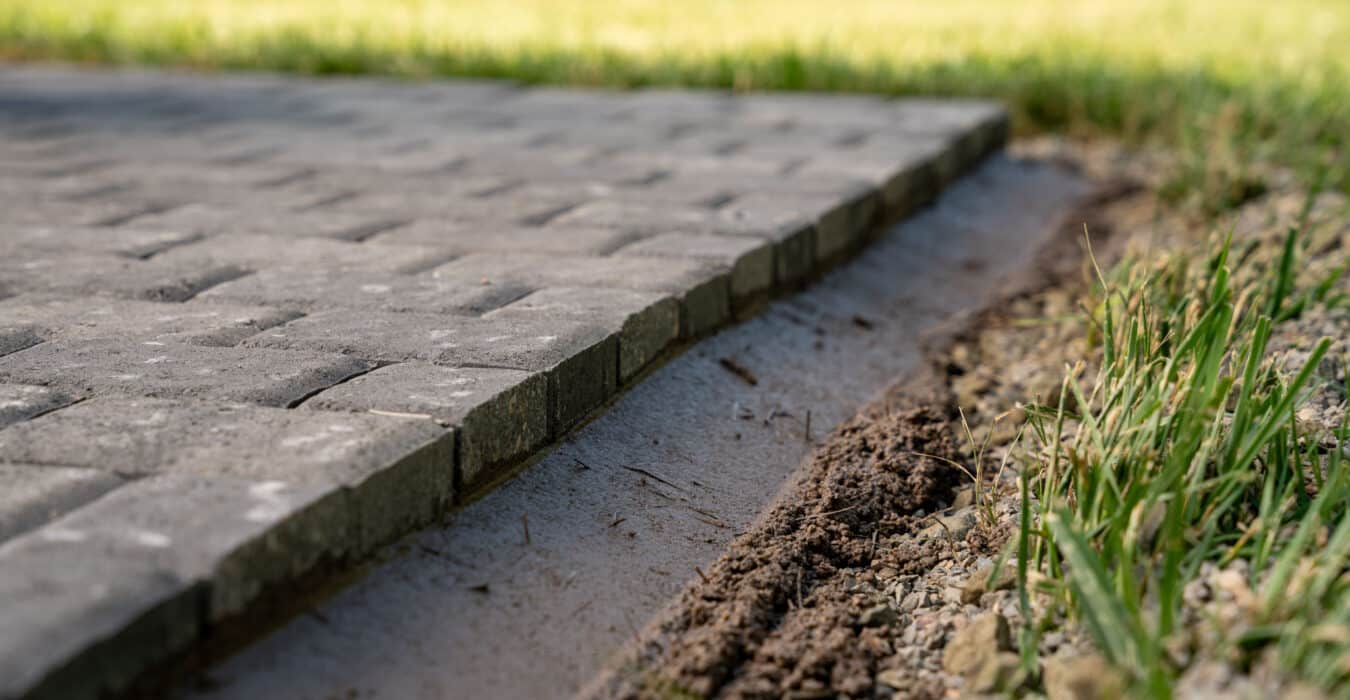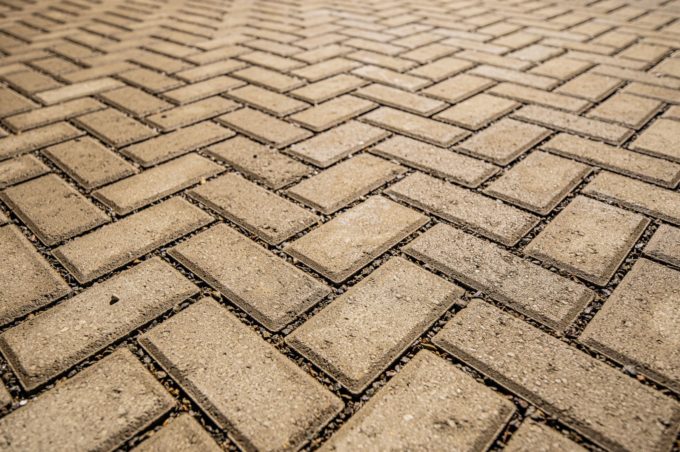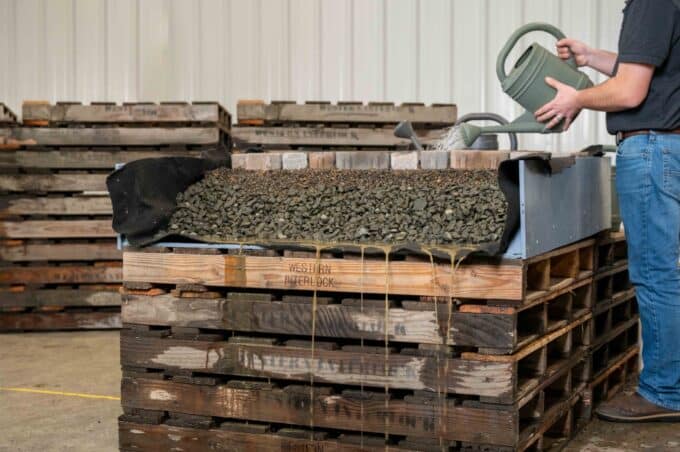Imagine this: You’ve invested your time, effort, and creativity in creating a beautiful paver project—perhaps a winding stone pathway or a charming patio. The design is impeccable, and the execution has been flawless so far. However, the finishing touch, the edge restraint, is the critical detail that can make or break your project’s longevity and aesthetic appeal. You may wonder how to keep pavers in place?
For a homeowner who’s meticulously crafting a professional-looking curved paving stone walkway, the choice of edge restraint is more than just a practical consideration; it’s an opportunity to elevate the overall quality of your DIY project.
In this article, we’ll explore five distinct styles of edge restraint, each with its unique characteristics and advantages for how to keep pavers in place.
Whether you’re aiming for a sleek and modern look, a traditional touch, or something in between, these options will provide the guidance and inspiration you need to make the right choice for your paving stone project.
How To Keep Pavers In Place Option 1: Plastic Paver Edge Restraint
Plastic edging is one of the more commonly utilized edge restraint systems for landscaping pavers design.
Plastic edging is available near a landscaped yard or a big box store. The kind we like to utilize is SEK Surebond Snap-Edge® Edge Restraint. It’s made of 100% recycled plastic, and like all other forms of plastic edging, it’s specifically designed so you can run in 10” corrosive spikes to rust and expand in the gravel.
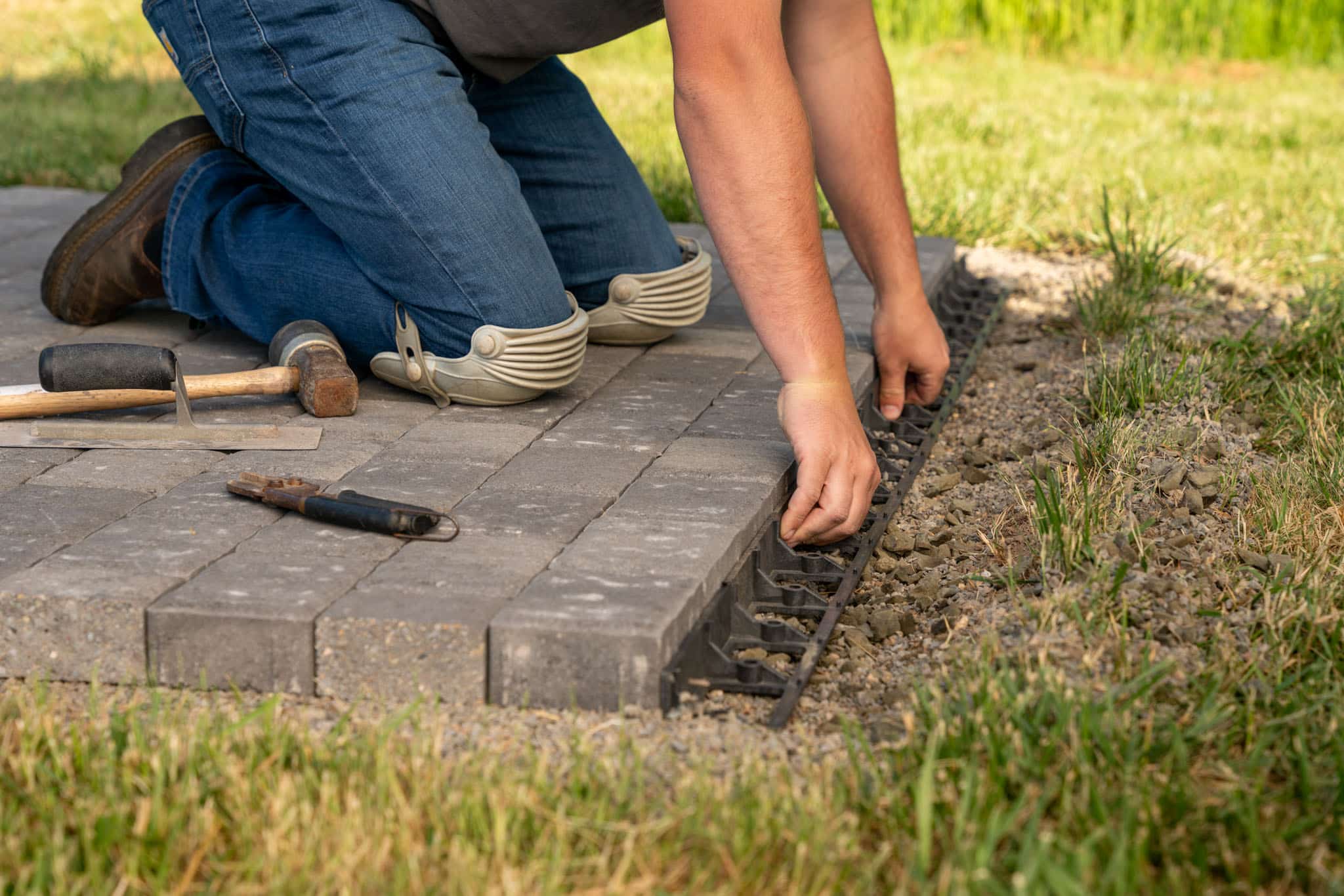
It’s relatively simple to install. You’ll pull away your bedding material, place it directly on top of your gravel, and hammer in your 10” spikes with a good-sized hammer. Other than that, the only tool you’ll need is possibly a pair of snips to cut the Snap-Edge® to the different necessary lengths for your project.
The only time Snap-Edge® isn’t the best option for your paving zone system is if you have an open-graded base construction for a permeable paver application or if you’re utilizing a hybrid base construction.
When the stakes have nothing to adhere to in your gravel, they can move and lift from freeze-thaw cycles. Also, if you’re installing this material on a scorching day, cover it up as soon as possible because the plastic can expand when it gets hot.
Option 2: Trowel-Finished Concrete
A concrete troweled edge is one of the more traditional forms of edge restraint for paving stones.
The nice part about doing a concrete troweled edge is that bagged concrete is available at virtually every building supply store, and the installation requirements are relatively simple.
All you have to do is scrape away your bedding material and trowel the concrete directly on top of your gravel. You want to create a 45-degree angle and bring the concrete halfway up your paver.
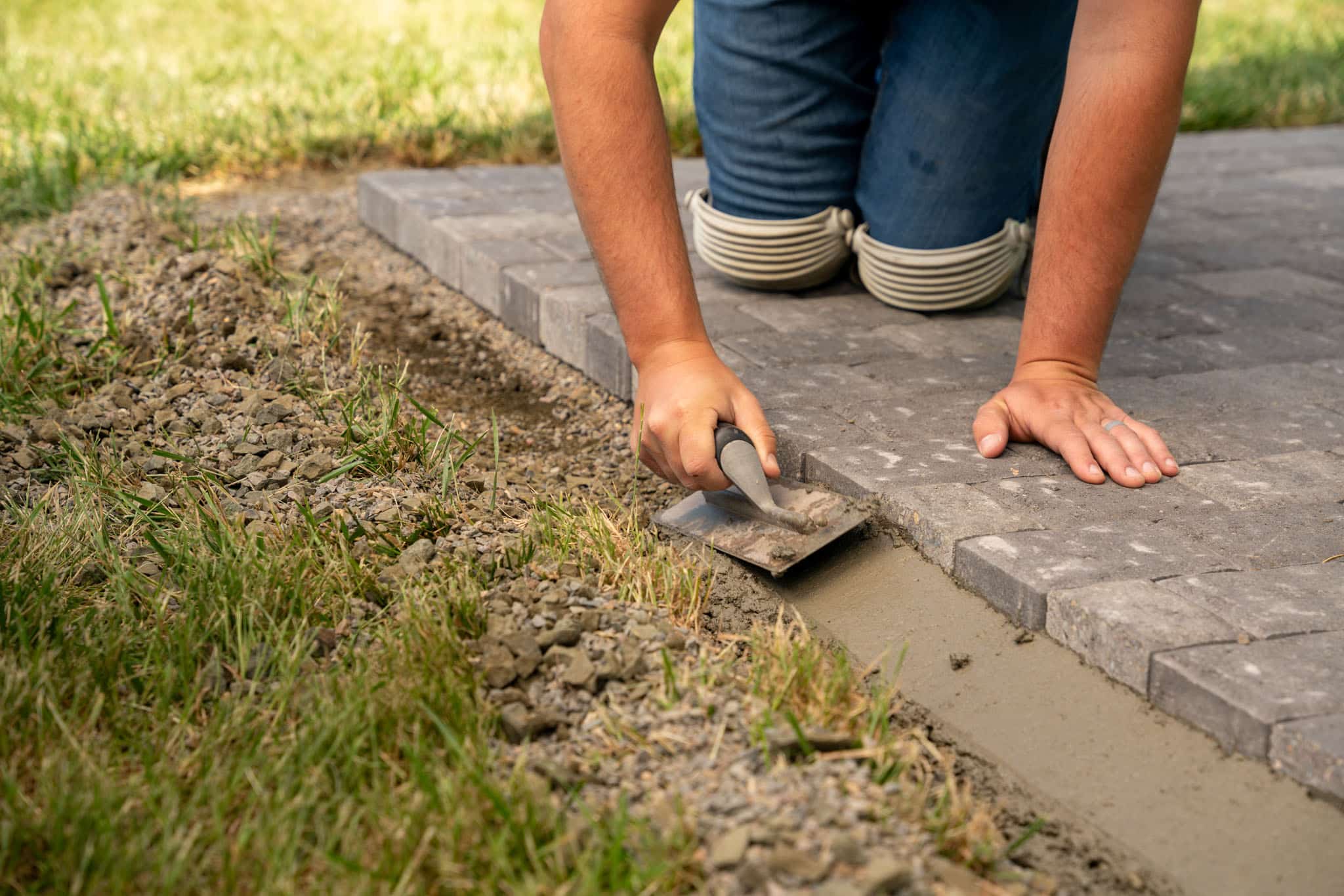
When installed correctly, a concrete troweled edge can last a long time. The only downfall is that it’s susceptible to cracking through freeze-thaw cycles if your climate is prone to fluctuations.
Option 3: Modified Concrete
While troweled concrete edge restraint has long been a traditional system for paving stones, a modified concrete system is worth considering today.
A modified concrete edge restraint is different from a traditional one in that it has chemical air treatments to make it more permeable; it has non-porous aggregates that are less susceptible to issues caused by freeze-thaw cycles; and it has fibers that make it all one piece in a nice, tight system.
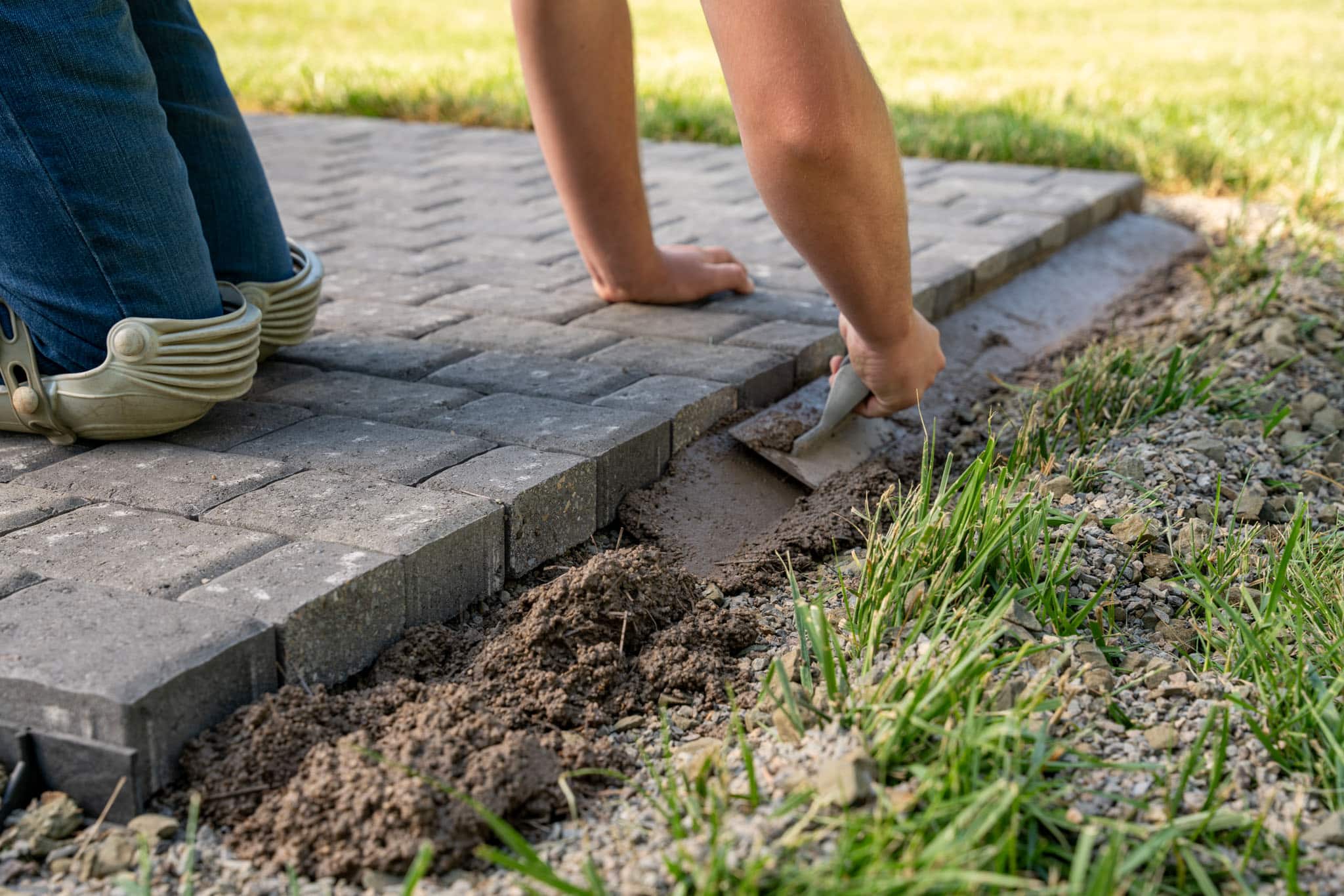
The best perk, specifically for Perma Edge, is that it’s designed to be low profile and easy to hide. In our example, it’s only 4” wide and about 5/8″ up from the bottom of the paver, which is about 33% of our material, as we are working with a 6 mm paver. And that makes it very easy to hide and cover up the landscape materials. When installing this material, make sure that you pull away all of your bedding aggregates to put this material directly on top of your gravel.
Another thing is that the mix design is already established. You will do one gallon of water per bucket, so there’s no guesswork for using too much moisture or cement in your concrete mixture. On top of that, this is still a helpful edge restraint system for open-graded base construction, whether for permeable pavers or a hybrid base construction. The only drawback to a modified concrete edge restraint is that it might not be readily available to you or be as cost-effective as the other edge restraint options.
Option 4: Concrete Bond Beam
One of the less common and more niche forms of edge restraint for pavers is bond beam.
The idea with bond beam is to build a small curb underneath the edge of your paving stones. The benefit is that the edge of your paving stones is prominent, and there’s much more room for landscape material if needed.
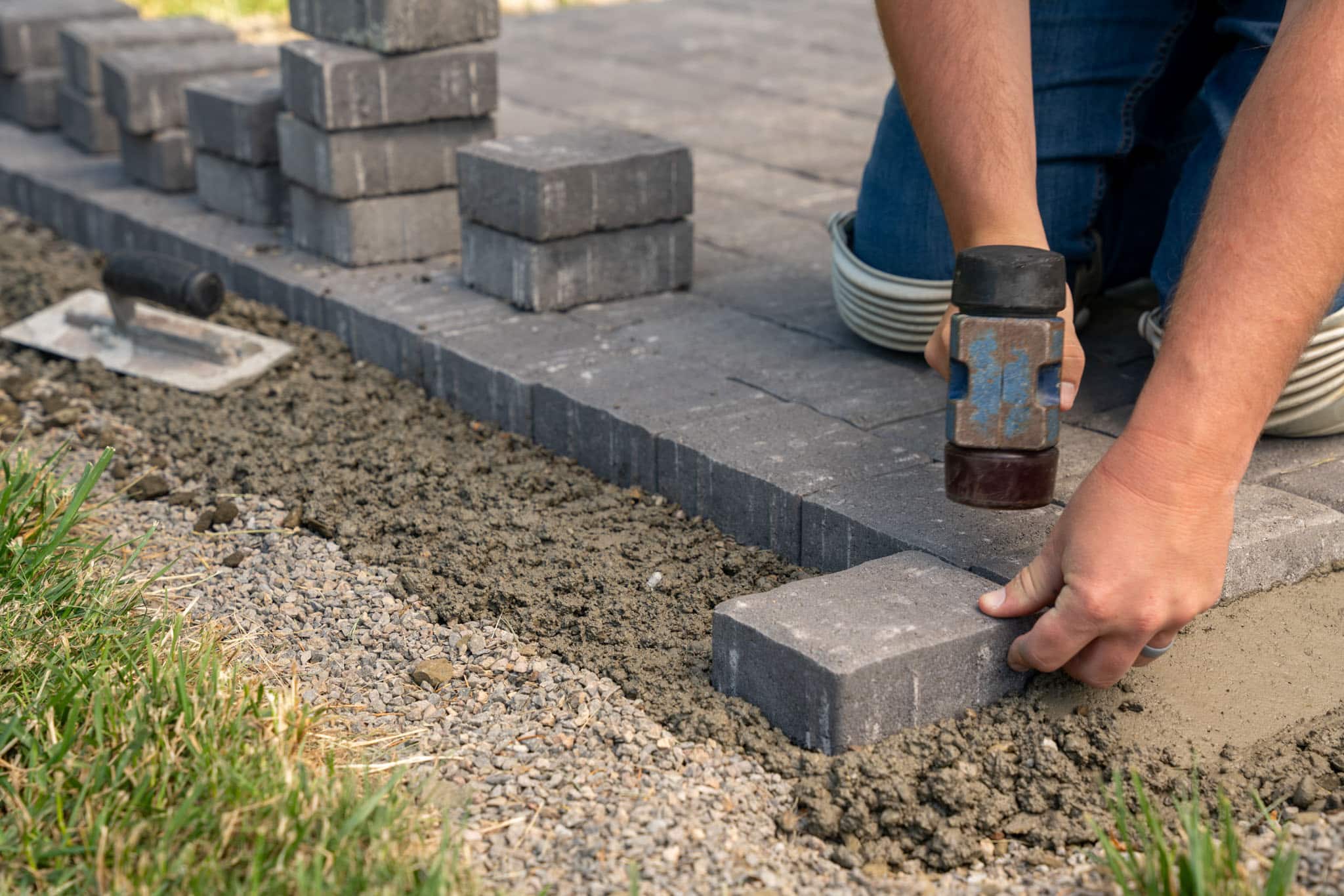
The disadvantage of bond beam is that it’s much more labor intensive. You will have to pull up your border stone, dig out a small trench, put in your concrete, and then individually set all those border stones back in with a mount or a hammer.
If you’re doing any angles or curves in your project, you may be inclined to have a border stone at that point to utilize this edge restraint because it makes it much stronger to have a nice, solid piece on those ends.
Option 5: Concrete Curb
The best form of edge restraint for base concrete pavers is a poured edge border curve.
This option is extensive, deep, heavy, and strong, so it’s only recommended for a vehicular driveway. One thing to consider if you’re thinking about a concrete curb for your driveway is that it’s very labor-intensive and tool-specific, so it can be done by yourself if you have the right equipment. Still, you may want to consider hiring a contractor.
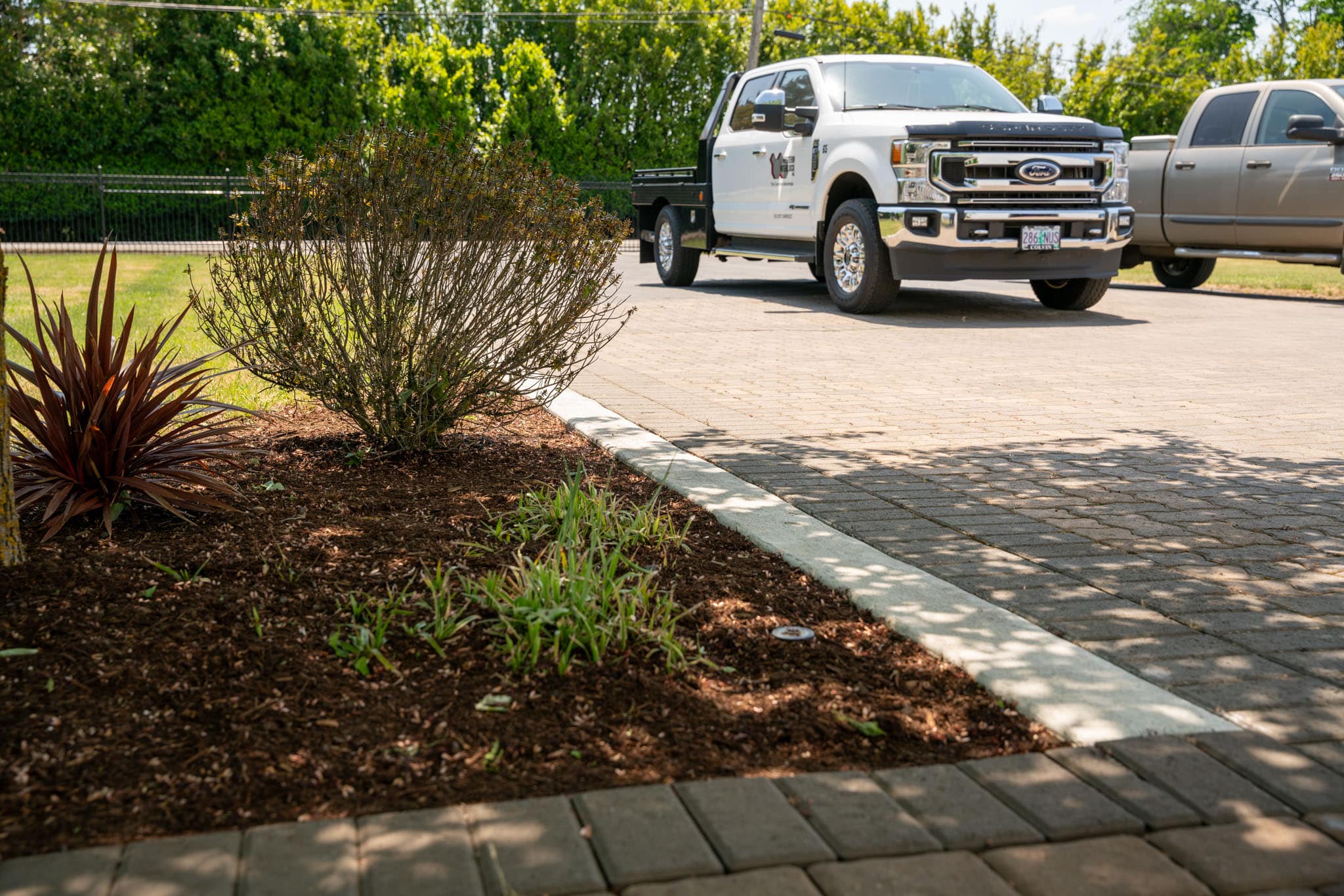
How To Keep Pavers In Place: Conclusion
These five different styles of edge restraint for your concrete paver system are worth considering. We know there are more systems, but we hope this helps you weigh the advantages and disadvantages of the five most common styles.
If you want to learn more about projects, you can do with paving stones and a retaining wall, check out our website and look around.
Get Help Before You Start
If you’re wondering how to keep pavers in place, that means you’re likely starting on a hardscape project. We have a free planning guide to help make the process as easy as possible! Download our free Project Planning Guide for a PDF walkthrough of everything you need to consider as you get going.


